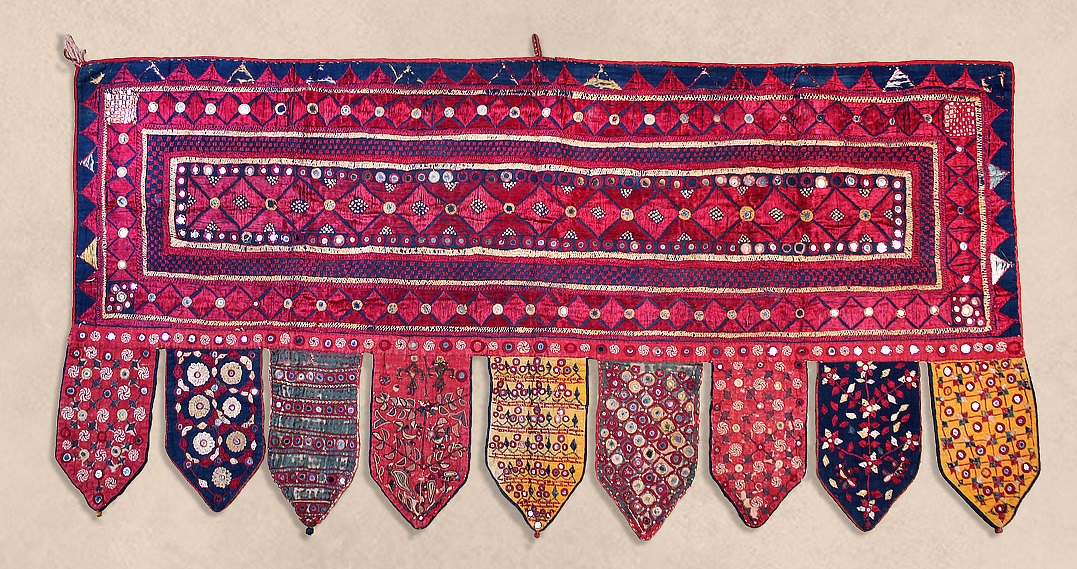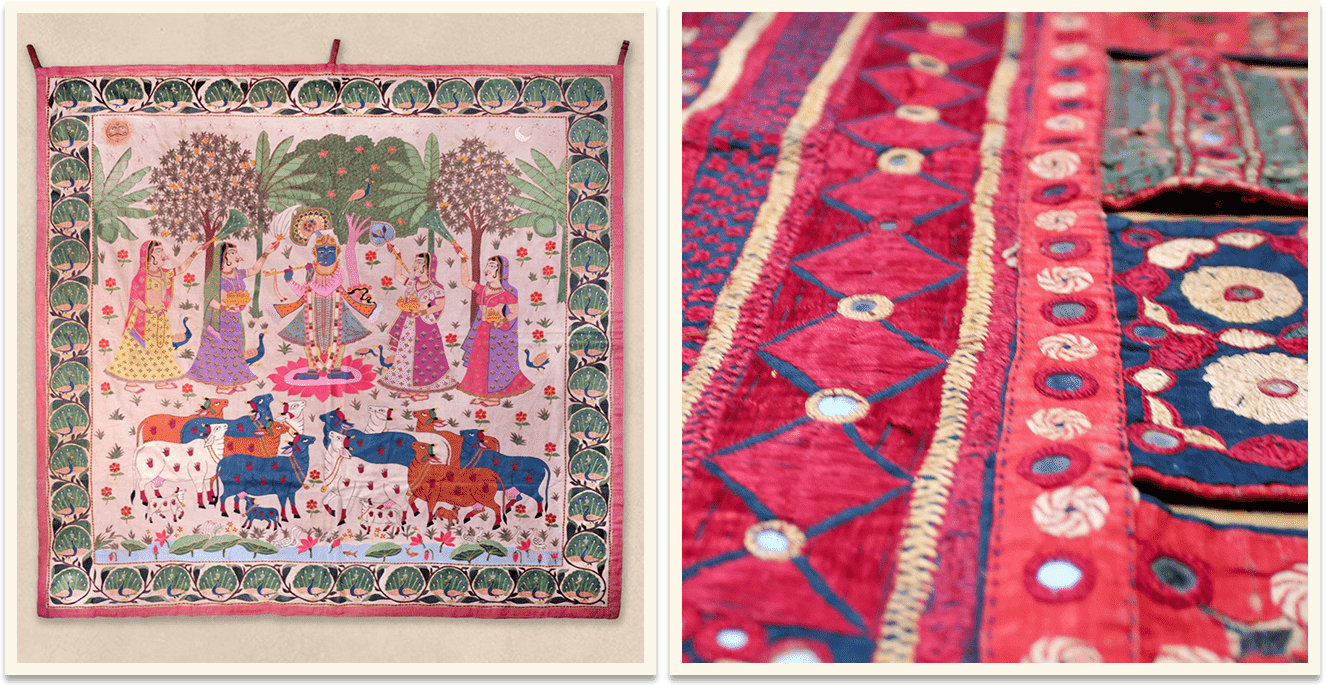Embroideries of Gujarat

Embroideries of Gujarat
Embroideries of Gujarat
A testament to human ingenuity
Discovering new styles and techniques, gaining new knowledge, is an important source of inspiration for us and a reason to look forward to a visit to India again. The diversity of textile processing in India is evidenced by the fact that institutions dedicated to documenting it are still reporting new discoveries to this day. Many so-called textile maps of India can be found on the internet, on which you can see per area which specialism is located where. In this piece we briefly tell about Gujarat, a state in India. Marco Polo noted in the thirteenth century that the level of craftsmanship in Gujarat is particularly high. A telling observation from someone who has traveled all the regions along the Silk Road.
Located in northwestern India, Gujarat has many different styles of embroidery, telling a cultural and historical story. Traveling through an area that you can travel within a day by car, it is noticeable that in every region, almost every village, a technique is mastered with a unique character. A particular stitch in embroidery, or a unique way of painting fabrics. Born out of ingenuity, what the eye wants and the materials and raw materials that are available.

The photo at the top of this page shows a cloth for above a door, a so-called Toran, of the Mahajan community. They use the so-called Khatipa stitch: long strokes of silk thread on a cotton cloth, in often geometric patterns, in purplish colors in which small mirrors are often incorporated.
The tapestry you see on this page was made by the Mochi community, traditionally specialists in leatherworking, who have applied the stitch they developed in leatherworking (the so-called Aari stitch) to textiles. A tight, short chain stitch, with which they create compositions that appear soft and warm, like a living painting.
